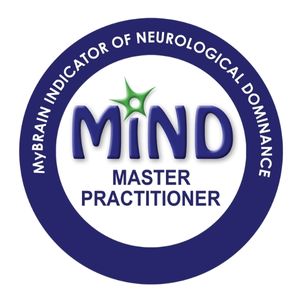Hello everybody. I’m Victoria Rennoldson, Communication and Culture Coach, and welcome to Wednesday Words with me. You can choose to watch this by clicking ‘play’ on the video above, which also has subtitles.
Or, because I know that many of you, just like me, like to listen to podcasts when you’re out and about, you can listen to the audio only version, by clicking below:
Finally, you can also read the blog as well, right here below.
Today we’ll be talking about top 5 tips for listening. I heard a recent statistic, which shocked me. It said that we listen for 17 seconds before we interrupt the other person. Now it doesn’t matter what the conversation is, whether it’s personal, or business- 17 seconds is a really short amount of time I’m sure you’ll agree, and it got me thinking.
It means that, if we listen just for that short amount of time, we’re not listening, in the true sense of the word. We’re listening to respond, to reply. We’re starting to gather our thoughts within the first few seconds of what the other person is saying, and that’s not positive, because we may not truly understand what the other person is saying.
Listening is a key sense, it’s probably something we should have learned at school. I also know it’s a skill that my clients consider important, particularly to build empathy, connections, and conversations in our quick-fire world of back-to-back meetings and getting communication out there.
At the end of the day, communication can’t really happen unless it’s two-way – we’re listening AND speaking. If we’re just speaking, then we’re just broadcasting, and that’s not good for individuals, for teams, for business.
So, I want to share today my top five techniques for listening, that I use with my clients. These techniques are very simple, but we have to pay attention to them for them to work. It’s just like learning a foreign language for example. When you learn a new language, you pay attention to it, you learn the skills, you practise. It’s exactly the same with listening – we need to learn the skills, and then we need to put them into action and practice.
Will we be perfect 100% of the time? Of course not, and that’s not the objective, but it’s about that incremental improvement in listening, and surely that’s a goal worth going for, particularly when it has an impact on the people that we’re working with.
So, let’s start with sharing these 5 key listening techniques:
- Focus on the other person. Now, we often get distracted when we’re listening, there is a lot going on in our mind, and we might be thinking about a conversation we’ve just had, or a meeting we’ve just come from, or maybe we’re thinking about what’s happening later today, or tomorrow, or even the long to-do list that we have to do. But the reality is, if we’re stuck in our heads with the mental chatter, we’re not paying attention and thinking about what it is this person is actually saying. It’s the same with external distractions as well, we need to put aside our phones, devices, and not try to look at our emails while listening to the other person. It’s just not going to work, and as humans we’re not designed to have divided attention in that way. So that means looking at the other person, paying attention to them, so they know you’re listening, they can feel that empathy and respect for them. And, it means as well that you can observe what’s going on, not just the words that they’re saying, but what’s happening in their facial expressions, their body language, what perhaps is not being said and how they feel about the topic they’re talking about. That can tell you a lot more than just listening to their words, so that is important.
- Suspend your judgement. We’re usually quick to jump in and say: ‘Okay, this is what I think..’, ‘This is what I like about your idea…’, ‘This is what I don’t like…’, or ‘This is what I think you should do…’, but if we’re going to really listen to the other person and make sure they’ve fully expressed their ideas and thoughts, then we need to suspend our judgement, and we need to stop. Clearly, there comes a point in the conversation where we may want to express what we think, and I’ll talk more about that later, but initially we need to put that aside, and just pay attention to what the key idea is, and what the person is trying to say. That way, they can feel like they’re being heard, and also, remember the other person may not be an effective communicator. So it may take them a little while to get out the ideas that they’re trying to say to you. So put aside your own judgement and pay attention to them and what they’re saying.
- When they pause, they may not be finished. We sometimes feel like we need to jump in when there’s a pause in a conversation, but silence can be a good thing. It might mean the other person is still thinking, so when there is a pause in the conversation, just wait that extra beat, and make sure that they’re truly finished. You might check that, and make sure that you have understood that they are finished, by saying something like: ‘So tell me more about this…’ or ‘Is there anything else you want to add to that?’ It’s a great way to make sure that person has fully expressed themselves, and again, it’s showing that you’re truly listening to them.
- When they have finished, reflect back and clarify. When they have finished, it’s great to make sure that you have understood what they’re saying. So, ask clarifying questions, reflect back and summarise what you have understood, make sure you’re on the same page. It’s surprising, but sometimes we misinterpret what’s being said, because we filter it through our own lens, and making connections which are perhaps not there. So do make sure you ask these questions to make sure you’ve really got the idea.
- Check they want your feedback: make sure your feedback is welcome. Sometimes people just want to be heard, they want to express themselves, and speaking out loud is their way of fully exploring an idea or thought. So, make sure, before you give your feedback, that you ask them: ‘Would you like my feedback now?’, or ‘Would you like my perspective on this?’. I would probably guess that most people would, maybe 80 to 90%, but sometimes people just want to be heard and explore their ideas.
Let’s summarise:
- Focus on the other person
- Suspend your judgement
- When they pause, they may not be finished
- When they have finished, reflect back and clarify
- Check they want your feedback.




